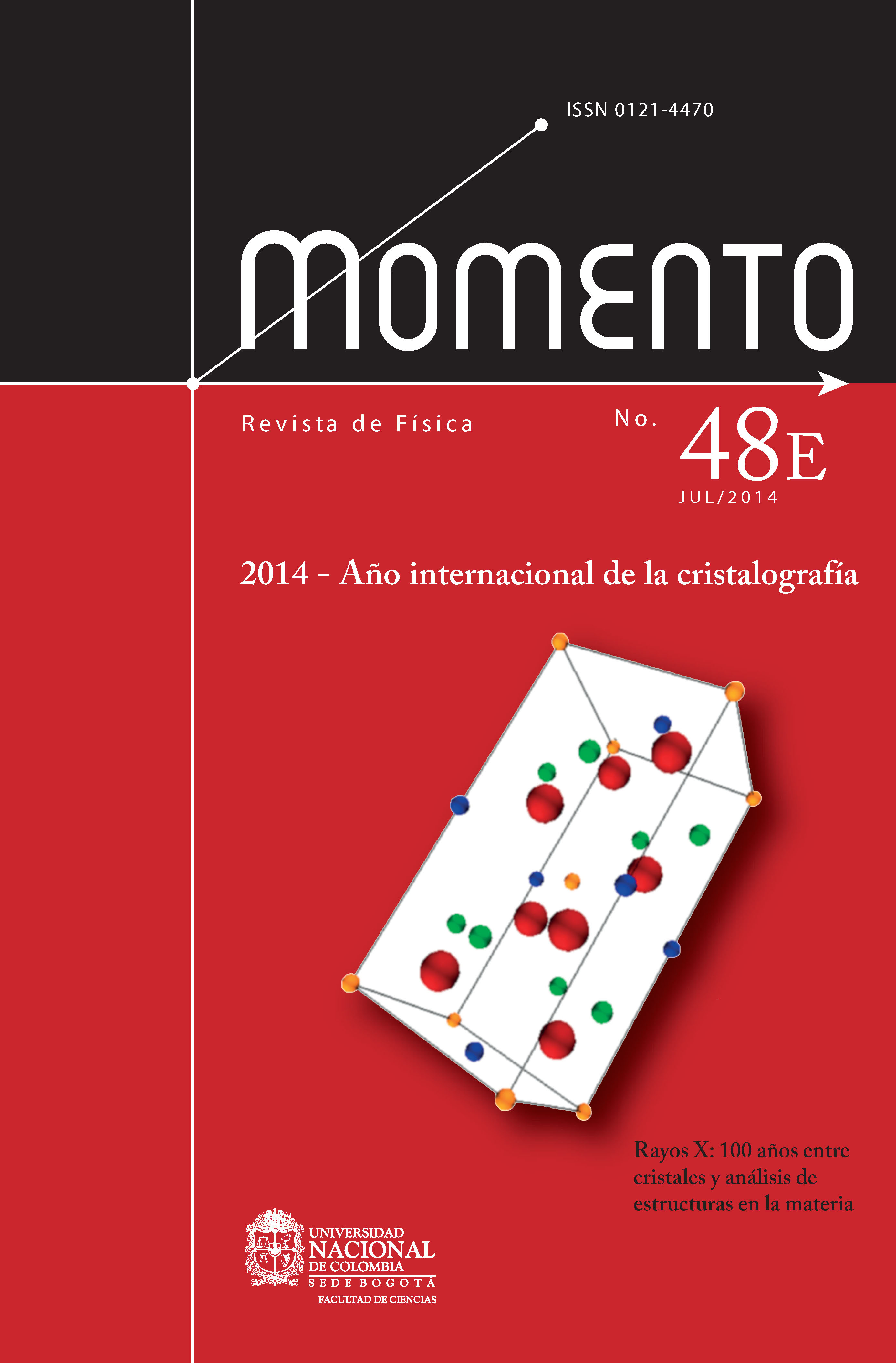CARACTERIZACION DE PELICULAS DELGADAS MEDIANTE EL DIFRACTOMETRO X’Pert-PRO PANalytical
CARACTERIZATION OF THIN FILMS BY X’Pert-PRO PANalytical DIFRACTOMETER
Keywords:
Película delgada, Difracción de rayos-X de haz rasante, reflectividad de rayos-X. (es)Thin films, grazing incidence X-ray diffraction, X-ray reflectivity (en)
Downloads
En este trabajo, se describe la caracterización estructural de películas delgadas empleando un equipo convencional de difracción de rayos-X, X’PERT PRO PANalytical. Se incluye una breve revisión teórica de las técnicas de difracción y reflectividad de rayos –X. En la parte experimental se determinaron las condiciones necesarias para el montaje de las muestras en el equipo, empleando las configuraciones de incidencia rasante y de reflectividad de rayos-X. Se analizaron 11 muestras diferentes de película delgada y los resultados de espesor y de parámetro de red se obtuvieron mediante los programas X’pert Reflectivity y X´pert HighScore Plus respectivamente. Los resultados obtenidos sugieren la viabilidad de emplear un equipo convencional de rayos-X para la caracterización de películas delgadas.
In this work, the structural characterization of thin films using a conventional diffraction equipment, brand X'Pert PRO PANalytical X-rays is described. A brief review of the theoretical diffraction techniques and X-ray reflectivity is included. In the experimental part the conditions necessary for the assembly of the samples were determined on the computer using the settings grazing incidence and X-ray reflectivity. 11 different thin film samples were tested and the results of thickness and lattice parameter were obtained by the X'Pert HighScore Plus and X'pert Reflectivity programs respectively. The results suggest the feasibility of using a conventional X-ray equipment for the characterization of thin films.
How to Cite
APA
ACM
ACS
ABNT
Chicago
Harvard
IEEE
MLA
Turabian
Vancouver
Download Citation
Article abstract page views
Downloads
License
Those authors who have publications with this journal, accept the following terms:
a. The authors will retain their copyright and will guarantee the publication of the first publication of their work, which will be subject to the Attribution-SinDerivar 4.0 International Creative Commons Attribution License that permits redistribution, commercial or non-commercial, As long as the Work circulates intact and unchanged, where it indicates its author and its first publication in this magazine.
b. Authors are encouraged to disseminate their work through the Internet (eg in institutional telematic files or on their website) before and during the sending process, which can produce interesting exchanges and increase appointments of the published work.



















